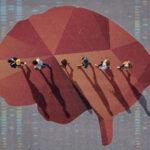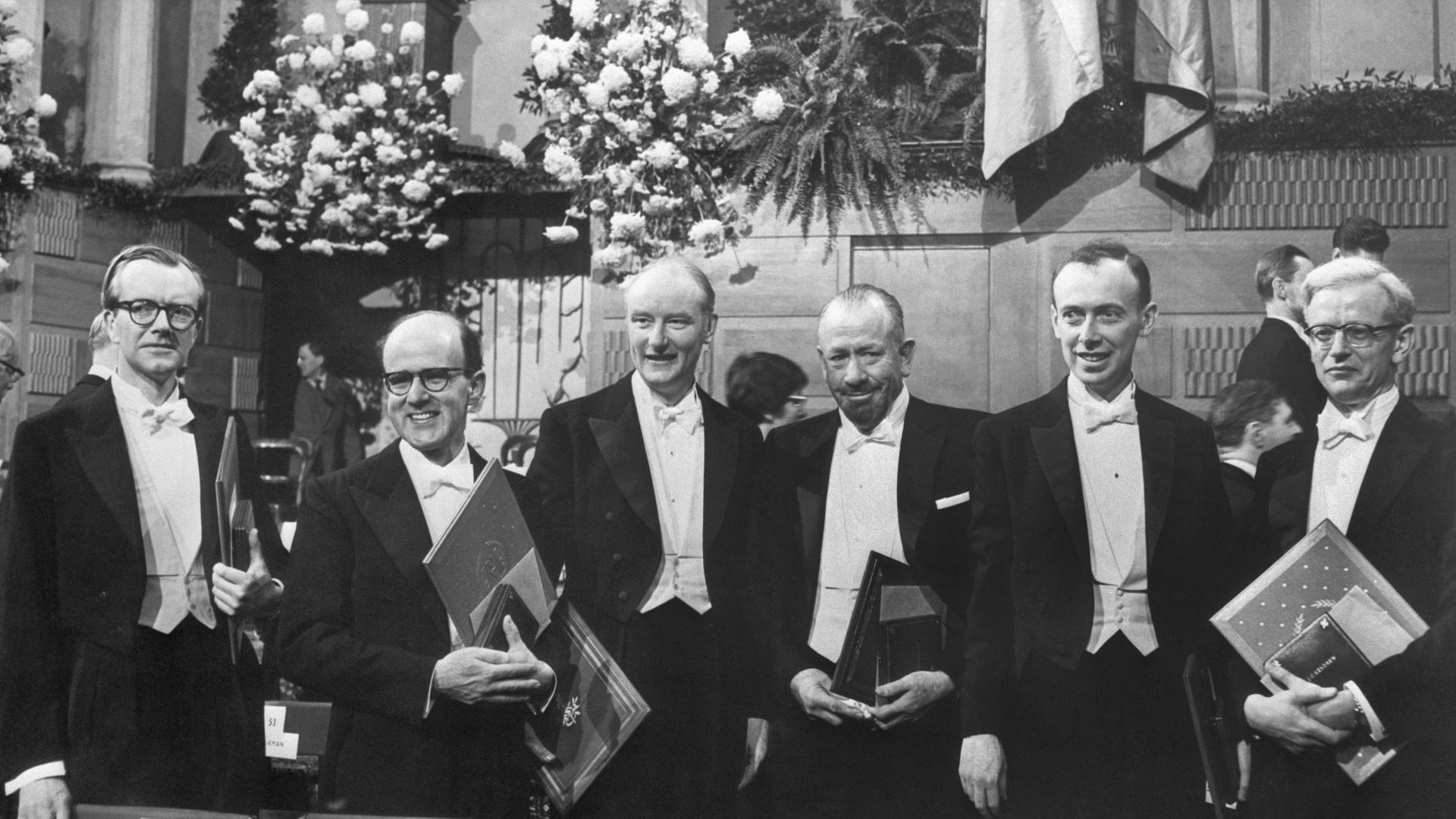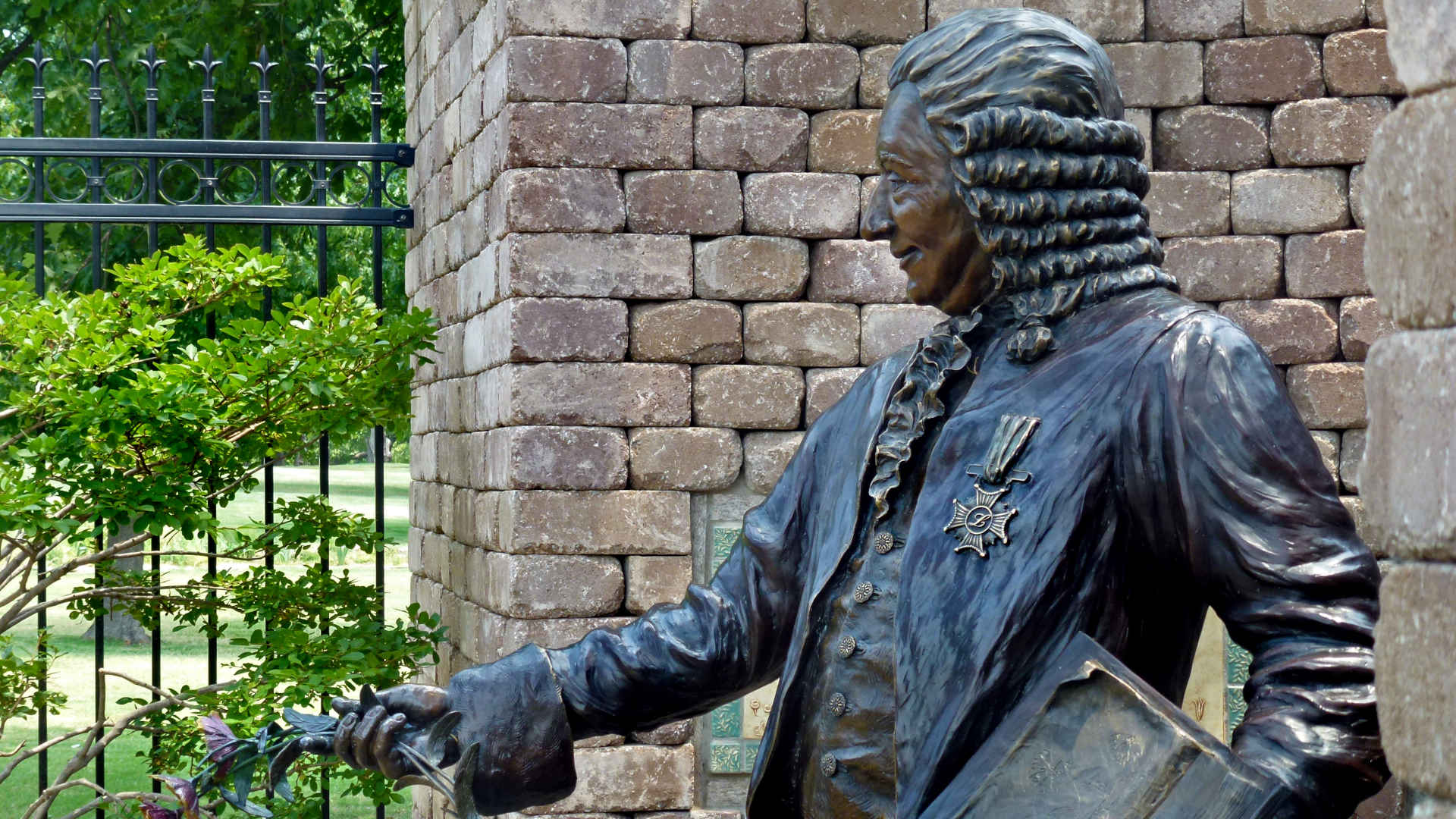For the past several years, I have taught a seminar called The Literature of Science to a dozen or so honors students at the University of Texas. These clever undergraduates are all majoring in the hard sciences, and most of them already have some experience doing research. We read stories, both fiction and nonfiction, and discuss how authors communicate science and depict scientists, whether real or imagined. We are trying to understand, beyond our particular experiences, what science is and what scientists do.
During a recent meeting, my students and I discussed what many people consider to be the greatest memoir ever written by a Nobel laureate: “The Double Helix,” by James Watson. During the early 1950s, Watson illuminated the structure of DNA with Francis Crick, thanks to the light of an unpublished photograph taken by Rosalind Franklin and one of her students. Although Watson had met Franklin only a few times, he mocked her throughout his memoir as a dowdy and bitter feminist who refused to collaborate with men. Watson and Crick received the Nobel Prize in 1962, alongside Franklin’s colleague Maurice Wilkins, and Watson felt licensed to tell the story as he pleased. Franklin died of cancer in 1958, a brilliant Jewish scientist unheralded for her painstaking research.
Thanks to the careful scholarship of several women, we can now appreciate the role that Rosalind Franklin played in the discovery of DNA, despite the sexist and racist environment in which she labored. And thanks to James Watson’s own mouth, we know that his chauvinism toward Franklin bespoke his broader prejudices against women and also people of color.
During our discussion of Watson’s memoir in seminar, my students debated whether science could ever be truly objective, given the brazen iniquities of some of its leading contributors. One of the students broached a disturbing thought experiment: What if a pediatric oncologist developed a cure for a ravenous cancer but, before he published, he was arrested for sexually abusing his patients? What if he refused to release the cure unless he was offered immunity from prosecution? Is there any scientific discovery important enough, any medical advance virtuous enough, that we could acquit a despicable man for the common good?
I interjected, a bit too curtly, that this is not a choice we will ever have to make. The thought experiment fundamentally misunderstands how science proceeds. My clever student was drawing a crude, albeit common, picture of science based on the fallacious premise of individual genius. Science simply does not issue from singular minds. It is a chorus, a community that thrives on fellowship and collective skill. So, the answer is simple. We indict the abuser, immediately.
Even James Watson would have understood that.
In his memoir, Watson described himself as merely one of a half dozen biologists who were converging on the double helix model of DNA. They were all competing to understand the structure of heredity, but they all relied on each other’s ideas and experiments to strengthen their own arguments. And every one of them was collaborating with several other colleagues and students. The resonance of their knowledge is what spurred their progress.
In his memoir, as in the years since, James Watson has made much — too much — of the flimsy efforts to link genetics and human intelligence. But he rightly admitted that no single intelligence discerned the structure of genes. That is why his memoir is so vibrant, despite its rank bigotry. Although we already know the conclusion to his story, Watson heightened the tension of scientific discovery by not simplifying how it occurred. He told us about the many players and their clever ideas, but also their many misses and false starts.
Because that is how science proceeds: ploddingly, even fitfully, and with plenty of errors, like a full season of baseball. And that is why the pageantry of science can be so exciting. It is a team sport, with talented individuals who nonetheless fail most of the time. And yet, at any moment, these players may transcend their failures and inspire us with moments of indelible beauty, when they compete fairly and well.
Had Watson and Crick not realized the structure of DNA from Franklin’s photograph, another group of biologists would have, likely within weeks. Watson admitted as much in his book. And perhaps these other competitors would be even more deserving of our adulation because of how they played.
So, if the cure to a horrific cancer existed, we need not bend to one vile man to procure it. In fact, we need never elevate the scoundrels and cheats of any science to holy idols. There are always other contributors and supporting players whom we can commend.
The history of physics, on which I am writing a book, is flush with examples. Richard Feynman crafted elegant diagrams and a profound theory, but he was also a philanderer who abused his spouse. A cluster of physicists in war-torn Japan developed an equivalent theory, yet few people recognize their names today. Albert Einstein was certainly a genius, but he neglected his children and abandoned his wife, whose thankless labor allowed his mind to flourish. Robert Millikan quantified the charge of the electron, but he embroidered his data and snubbed a graduate student who did much of the work. He also supported an openly racist eugenics movement and has been rightly denounced as a white supremacist. A building is still named after him on the campus of Caltech.
Science is great despite some of the wretched men who helped make it. It would be even greater if we reckoned with its racist and misogynist past, reclaimed its forgotten players, and acknowledged how science is collectively done. That is the only way to create a more inclusive present.
Early last year, the trustees of Cold Spring Harbor Laboratory, where Watson was once the chancellor, took the first step. They revoked his honorary titles. This summer, they also removed his name from the graduate school and voted to create a program on the social implications of biology.
And earlier this month, the Nobel Prize Committee rightly awarded a share of the Prize in Physics to Andrea Ghez and the Prize in Chemistry to Emmanuelle Charpentier and Jennifer A. Doudna. In the future, scholars will not have to reclaim the contributions of these brilliant women from erasure, as they once did Rosalind Franklin.
But the Nobel Prize does not canonize saints. The Prize does not even reflect how science is done; it merely hardens the fiction of individual genius. And that is dangerous, in an era of global pandemics and climate change. Because the collective effort of the full congregation of scientists, from all races and creeds and genders, may be the only way to ensure the survival of us all.
Joshua Roebke is finishing a book on the social and cultural history of particle physics, titled “The Invisible World.” He won a Whiting Foundation Creative Nonfiction Grant and teaches literature and writing at the University of Texas at Austin.












Comments are automatically closed one year after article publication. Archived comments are below.
When Dr Omura of Japan (Kitasato Univ/Institute) received the 2015 Nobel for medicine, it became once again an issue in the history of Nobel as its very first prize for medicine did not include Dr Kitasato (1853-1931) who worked with his German colleague who received the award. Kitasato apparently was included in the short list. It has been regarded as a racist mistake for some.
The conflict between individual and team contribution, which the discussion about the Nobel price shows, and which increases as elder the foundation becomes, has as basic reason the current definition of intellectual property rights. Even science in contemporary operation suffers a lot this way. Insufficient constraints are:
– List of names without clear role definition regarding the single paper.
– Complete neglecting of stimulation effects (team spirit or prerequisites received short before the idea).
A possible solution would be:
– Do not grant any intellectual property right to people, who hide their stimulants.
– Grant awards (only?) to stimulants (which will become known by the previous method).
– Include stimulants into financial earnings.
For more information about basics of idea generation consider: https://www.researchgate.net/publication/321888028_Physics_of_Love_alias_A_Model_of_Information_Processing_Groups.
It is fair to limit the ‘lone genius’ image to the last few hundred years. As a research scientist in the US and abroad for 25 years I can say it is beyond words how the ‘boys club, petty competitions, and make-yourself-look good at all cost culture has suffocated many researchers deserving of respect, funding or public acknowledgement [not only in minorities]. I cannot think of any field where so much is at stake – success, prestige, money, etc. – that is not plagued with human foibles. Perhaps science, which has exploded in importance and impact on public awareness, has become a bastion of precious attitudes reinforced by ‘The Prize”. So much so that we find it’s inequities more intolerable than, for example, in business. I was once told by a senior researcher in London that ‘science is a communistic endeavor’. By this, he meant that it is never practiced in isolation and that it is always for the common good. Yet, much of what I experienced was territorialism, unwillingness to openly collaborate, and at times, blatant misogynistic behavior.
I believe that intentionally and repetitively damaging the value of other members of the group are rooted in insecurity and paranoia not limited to the dominant male population. We can all examine when we have exercised unfairness because we didn’t like or ‘recognize’ someone else as being one of ‘us’.
The original title of The Double Helix: The Base Pair.
While science is indeed a collective effort, it is clearly not always the case that if a discovery had not been made by one individual or group, it would have soon been made by another.
Two examples: Mendelian genetics, discovered and published by Mendel in 1866, but lately ignored until it was “rediscovered” by Hugo de Vries, Carl Correns, and Erich von Tschermak in 1900.
The reduction of compressibility drag at transonic speed using swept wings, discovered and published by the German aerodynamicist Alfred Busemann in 1936, and even presented at an international conference attended by leading experts. Yet it was only incorporated in engineering practice in Germany, although of great wartime significance, and “rediscovered” by the American RT Jones in 1945 and from captured German documents.
These natural experiments demonstrate that some discoveries are not simply part of the Zeitgeist but significantly singular.
Darwin was actually influenced by a number of people to include Cuvier, Lamarck and Lyell.
We all “stand on the shoulders” of those that went before us, as well as benefitting from the community of colleagues in the here and now. “Lone wolf” thinkers and doers exist, but cannot accomplish what they could within a team. There are exquisitely few “original thoughts,” only variations, possibly mutations, of a theme.
I also appreciate the phrasing, “myth of individual genius.” Not that individual genius does not exist, but the negative effect that this idea has, especially on young minds. Scientific (and individual life) accomplishments result from hard work, perseverance and creative problem solving from both the individual and the group as well.
“He that is without sin among you, let him first cast a stone at her.” One does not have to believe in the source of this quotation to agree with it. Harold is right in my book.
Wrong. A team can provide the best science if every member is an expert in her field – but a team has to agree in order to function as a team. What about that person who has a different idea, the one who’s not a ‘team player’. The person who has gone out on her own, with her own ideas and fought for them against the beliefs of everyone. No, like evolution science does not preceded in an oderly way, but if fits and jumps. When Darwin proposed evolution – that was not a steady progression, like the discovery of the quantum of energy, it was a ‘quantum’ jump that may have later been discovered by others, or not – and if not? So we owe Niels Bohr, and Einstein whose thoughts were so different from the billions of others on Earth and so productive. So, some discoveries might never had been made without the persistence of extraordinary people – and then we’d be stuck for centuries or perhaps forever.
I agree with you mostly but some early geniuses were so ahead of their time and so “beyond” their contemporaries that they were almost certainly a “lone wolf.” Archimedes. What little preserved of his discoveries in math and physics are mind-bogglingly genius. I have to believe there wasn’t some “think tank” hidden away that he was sucking help from.
Was he a jerk? I’d guess he was probably considered quite “weird” in his society and much of what he published had to be far beyond the comprehension of his average neighbors. Was he anti-social or “bad” by modern standards? Maybe. But are the social norms of any society, which are the constructs of flawed human, diminish the scientific achievements of the greats of science? My vote is, “No”.
The arguments here are infused for better or worse with a huge dose of presentism. Highly influential figures in science are often subject to post-hoc denigration that may help redress hagiographic excess but can equally distort the historical record for political and rhetorical ends. Here we have Professor Roebke proclaim “Science is great” — which may or may not be the case, depending on your place in the universe. More accurately, science signifies power.
This article has two unrelated subjects: (1) science is a group effort (we know that, but it’s always worth reminding the public, as Susan just posted so clearly), and (2) scientists can actually be human (gasp!), having affairs, being callous jerks, stealing credit, being sexist or racist. So? Same can be said of celebrated writers, artists, musicians … all human beings throughout history. Can we please stop the moralistic posturing? Am I furious that Rosalind Franklin didn’t get credit for her brilliant work? You bet. Let’s correct that record. Do I care about Feynman’s affairs? I do not. None of my damned business, and had nothing to do with his work.
I’ve located the original, which does show all six, at https://undark.org/wp-content/uploads/2020/10/GettyImages-515031428-crop.jpg. So there’s an error in the code for the web page, which is causing part of the photo to be cut off.
This does seem to depend on how you view the web page. In particular, if I zoom out in my browser so the page shrinks then the complete picture appears. And again the picture all shows up if I use my iphone to view the page.
Some people seem to be missing from the photo (on my web browser at least)
Yes. For me, too. It is a truncated photograph
Thank you for writing this piece and for so humanly and cogently exposing the myth of the lone wolf genius. Science, like many human communities has its legends and folk tales. It is hard for those outside of science to understand that “breakthroughs” are really a product of an accumulation of knowledge. The culture is slowly changing – more so in some disciplines than others – but still this pride in supposedly individual accomplishment carries on. Of course individuals DO make important contributions – but it is only in the consolidation of knowledge that true progress is made. The Nobel Prize has run its course. Giving it to individual women or individuals of color might provide it some life support – but in reality highlighting an individual ignores the many lab members who carried out the work, brainstormed ideas, and together made progress.
well said
So the answer to the thought question is to ignore the cure for a ravenous cancer until somebody nice stumbles on the cure?